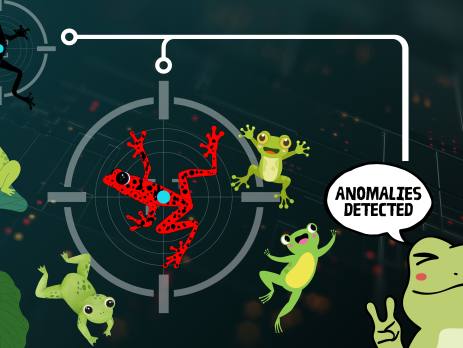NDR Explained: How AI Detects Anomalies in Your Network
AI and Machine Learning (ML) are transforming how businesses detect network threats. Network Detection and Response (NDR) leverages these technologies to spot unusual activity across networks, helping organizations stop attacks before they cause damage. In this guide, we’ll break down how NDR works, why anomaly detection is crucial and how AI and ML can keep your network secure.
How AI Detects Anomalies in Your Network
Redborder uses Neural Networks to analyze network traffic. Neural Networks (NN) are trained to recognize patterns of normal behavior across devices, users and applications. When something deviates from these patterns, like strange log-in times or weird communication between devices, the NN flags it as an anomaly.

Here’s how it works in practice:
- Learning What’s Normal – The system watches everything happening on your network and learns what “normal” looks like, kind of like how you know your office usually behaves.
- Spotting Weird Stuff – Once it knows what’s normal, it can notice when something unusual happens, like a strange computer trying to sneak in, just like spotting someone wearing a costume in the office when it’s not Halloween.
- Figuring Out What’s Important – Not every weird thing is dangerous. The system decides which problems are serious so the IT Team (aka: the grown ups) know what to fix first.
- Stopping Trouble Fast – Depending on how it’s set up, Redborder can do more than just alert your team, it can take action instantly, stopping suspicious activity in its tracks, like locking the doors before intruders even get near. This means threats are neutralized automatically, giving your team more time to focus on the real work, not chasing alerts.
The results: faster, smarter and more accurate threat detection that doesn’t rely on signatures or rules alone, it learns and adapts continuously, just like a human would.
Why Anomaly Detection Matters
Networks today face constant threats, from ransomware and malware to insider attacks. Traditional security tools often wait for Cyber-attacks to slip through before reacting. That’s where anomaly detection comes in.
Anomaly detection allows your NDR system to spot unusual behavior before it turns into a full-blown security incident. By continuously monitoring your network, it can identify:
- Unusual logins or access patterns – someone logs in at 3 a.m. from a strange location.
- Unexpected data transfers – for example, large amounts of sensitive data moving to an unknown device.
- Suspicious device activity – such as a compromised computer communicating with malware servers.
By detecting these anomalies early, your team can respond faster and prevent costly breaches. It’s like having a security guard that notices tiny changes before trouble starts, rather than only reacting after the damage is done.
Redborder’s AI-Powered NDR: Your Network’s Secret Weapon
Not all threats knock politely, some sneak in, lurking in the dark, waiting for the perfect moment to strike. That’s why Redborder doesn’t just watch the network, it learns it and fights back using Machine Learning & AI. It catches suspicious activity instantly, cutting through the noise so your team only sees the real threats.
Redborder adapts as your network evolves, staying ahead of clever attackers while automatically blocking or isolating anything that looks dangerous. This means your sensitive data stays protected, compliance requirements are easier to meet and your risk is dramatically reduced, all without adding stress to your team.
Network security isn’t a chore, it’s a superpower. Your team can focus on growing the business while Redborder handles the hackers, malware and everything in between… 24/7 – 365.
Technical Overview: AI Detection
We start by capturing traffic from multiple sources, NetFlow, IPFIX, PCAP and extracting key features: packet sizes, flow duration, timing patterns, protocol distribution and more. This data becomes the input for our neural networks.
We use autoencoders to learn normal traffic patterns. When something doesn’t fit, like an unusual connection or data spike, the reconstruction error flags it as suspicious. Recurrent networks (LSTMs) track sequences over time, which helps us catch stealthy attacks like command-and-control beaconing or lateral movement inside your network.
But detection alone isn’t enough. We correlate multiple anomalies to reveal full attack chains, giving security teams actionable intelligence. From isolating compromised devices to blocking malicious IPs, our system turns anomalies into fast, context-aware responses.
In short, Our ML-Powered NDR learns your network’s “heartbeat” and spots threats before they escalate, making cybersecurity proactive, not reactive.
Go and check out another one of our post, NDR in Metaphors



